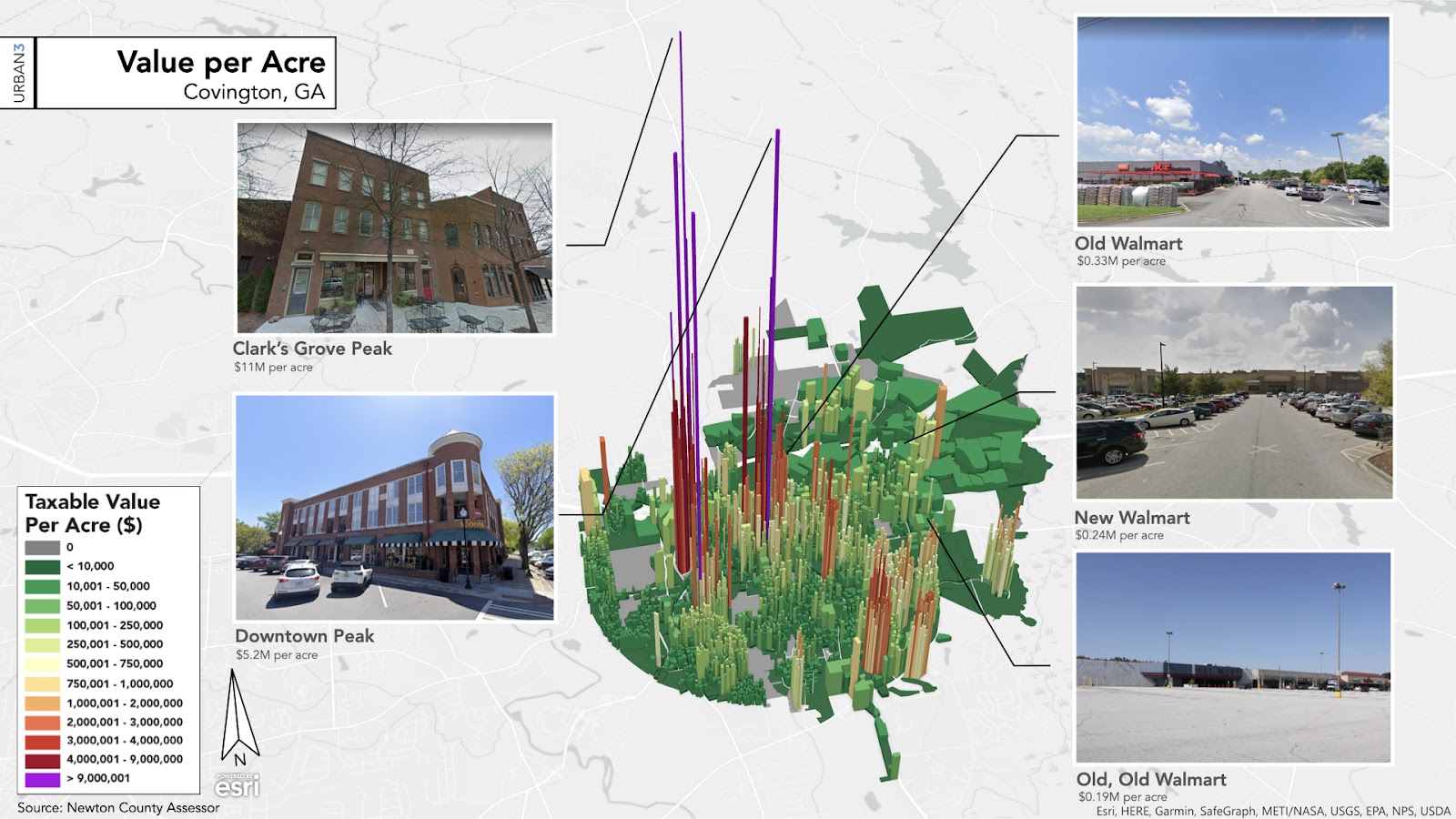ESLC Partners with Urban 3 to Study Eastern Shore Land Use

Urban 3 will work with ESLC to determine the value per acre of towns and cities on the Eastern Shore, as they've done for other places across the country, like Covington, Georgia. Graphic c/o Urban 3.
Thanks to funding from the Grayce B. Kerr Foundation, the Rural Maryland Council MAERDAF grant, and the Maryland Department of Housing and Community Development’s technical assistance grant, ESLC has recently begun a research project with a North Carolina company called Urban 3 to survey land use across the Eastern Shore. Local governments on the Eastern Shore face increasing development pressure in order to meet the rising demands of public services like education, affordable housing, infrastructure maintenance, and adaptation to climate change. Many communities are struggling financially to provide basic services in the face of these demands within current property tax revenue levels and therefore are unable to prioritize walking and biking, housing that is affordable, sustainability, conservation, or the environment. But targeted research can help.
The goal of ESLC’s project with Urban 3 is to survey and organize land use data so that it can be shared with local governments, empowering them to implement more environmentally sound and sustainable land use practices. Studies in Florida and Louisiana show that when local governments evaluate land use and utilize their limited land resources to prepare for the impacts of sea-level rise, communities and neighborhoods become more equitable and have less communal impact on water and air quality. ESLC anticipates similar positive results for communities on the Eastern Shore.
Over the past decade, Urban 3 has developed a unique means of calculating land use value. “Land use value” measures how worthwhile certain forms of land use are on a given property. For instance, building a new big-box store (like Walmart) in a small town might provide jobs and convenient shopping, but it would also require a lot from the government: new roads, new sewer and stormwater infrastructure, fire department calls, police calls, and a large amount of land for a parking lot. Would the benefits of that proposed development outweigh the costs of new services provided by the government? To answer this question, Urban 3 uses local tax data to calculate a measurement called Value Per Acre (VPA). VPA contrasts the public investment in infrastructure and services with property tax revenues. It is a valuable measurement that can help local governments and planning commissions to determine the return on investment with each development proposal.
Using VPA, Urban 3 has found that historic town centers and communities that are more walkable and better connected to parks, playgrounds, schools, grocery stores, and other basic services are more valuable for the community than more modern developments with low density and a design that favors driving over walking and biking. While modern developments often impact local government budgets negatively, requiring more public funds than the property tax revenues they provide, historic town centers and high-density communities create healthier lifestyles by providing easier access to outdoor recreation and a better connection to the local environment. Urban 3’s work also reveals that farmland and land that is left undeveloped have a higher return of investment due to the fact that they require very little public services. On the Eastern Shore, Urban 3’s data and modeling will help to create a region-wide interactive map showing land use value for local governments as well as the future impact of sea-level rise. Stay tuned for further updates as ESLC moves forward with this important project.






